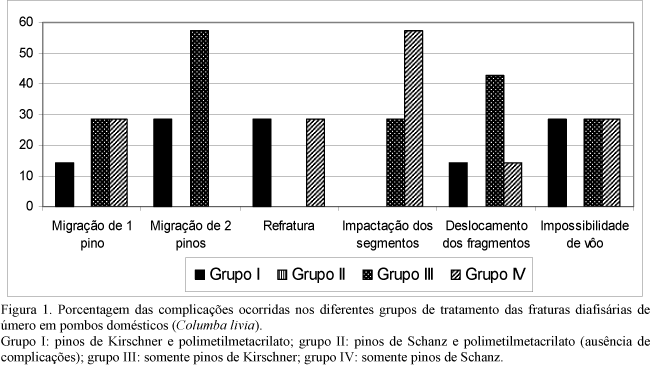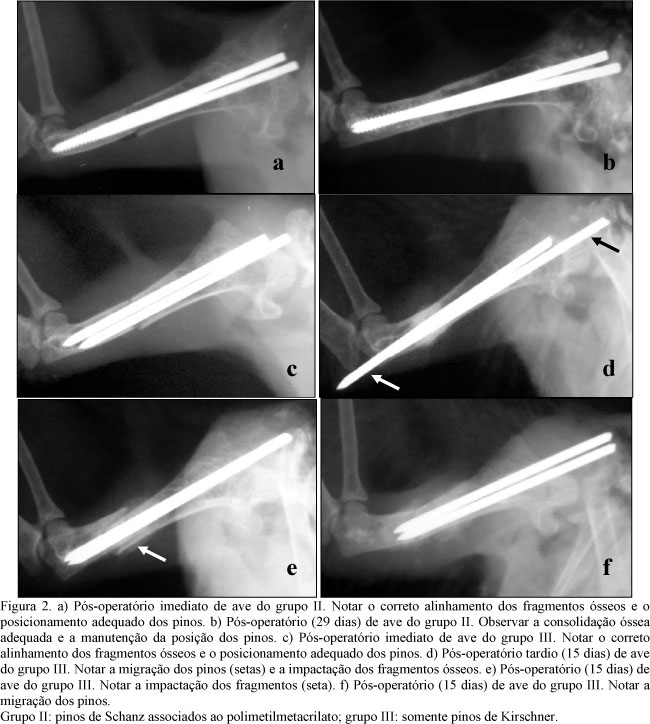Twenty-eight adult domestic pigeons (Columba livia) were randomly divided into four groups of seven birds each. Anesthesia was performed with isoflurane and oxygen, and an osteotomy of the right humerus midshaft was performed with an electric cutter. On the sequence, one of the following treatments was chosen: group I, two Kirschner pins and polymethylmethacrylate intramedullary; group II, two Schanz pins and polymethylmethacrylate intramedullary; group III, two Kirschner pins only; and group IV, two Schanz pins only. The mean time ± standard deviation for fracture healing was 29±4.04 days in group I; 24±5.29 days in group II; 33±3.74 days in group III; 32.9±5.21 days in group IV. Pin migration was observed in 42.9% of the group I animals, 0% of group II, 85.7% of group III, and 28.6% of group IV. Two pigeons of groups I, III, and IV presented flight incapability. The results suggest that two Schanz pins and polymethylmethacrylate intramedullary are an effective method of humeral ostheosynthesis in domestic pigeons (Columba livia), resulting in faster fracture healing with minimal complications.
birds; fracture; orthopaedic; humerus



